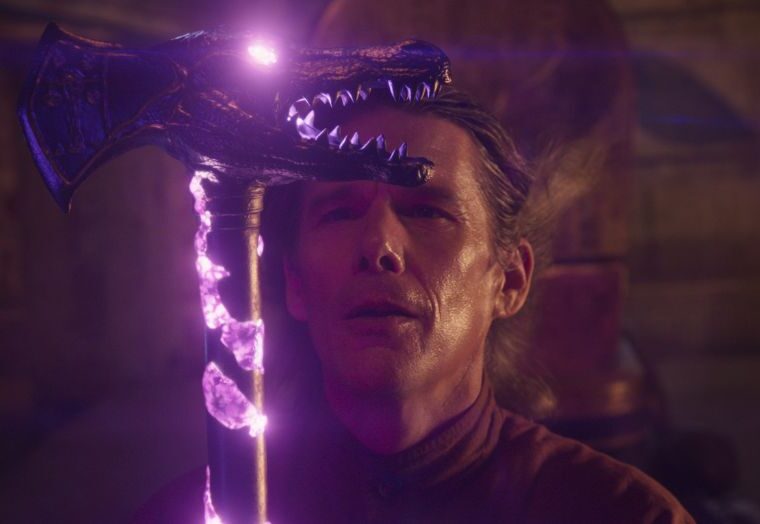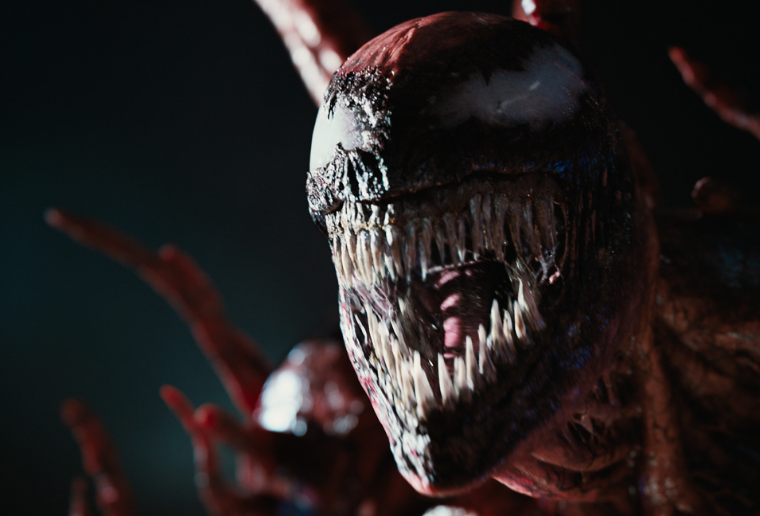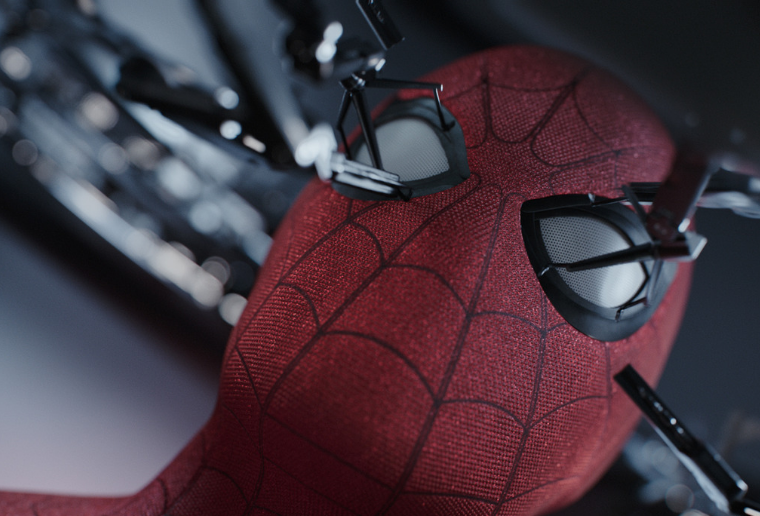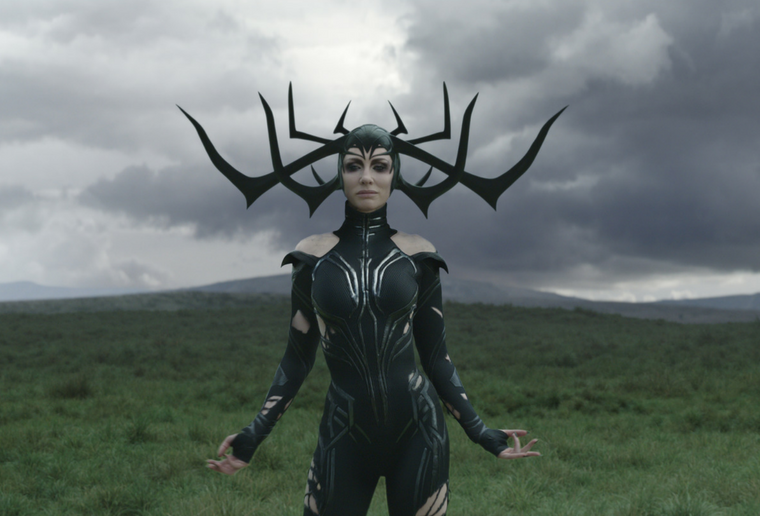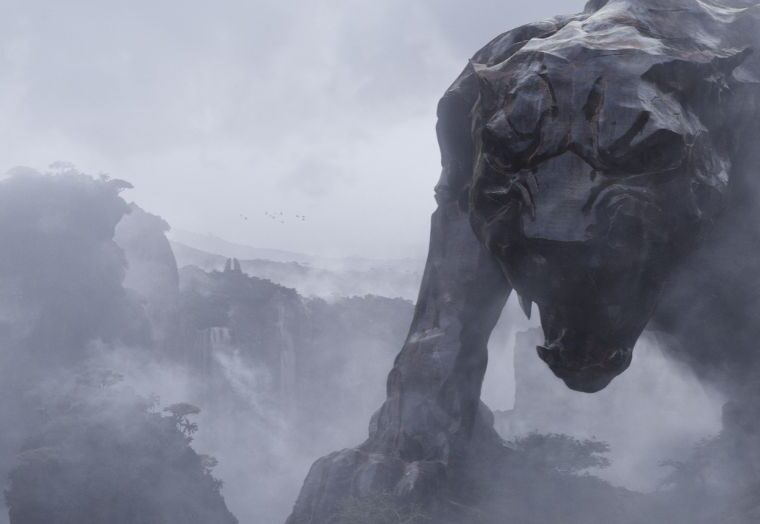Venom: Let There Be Carnage Case Study
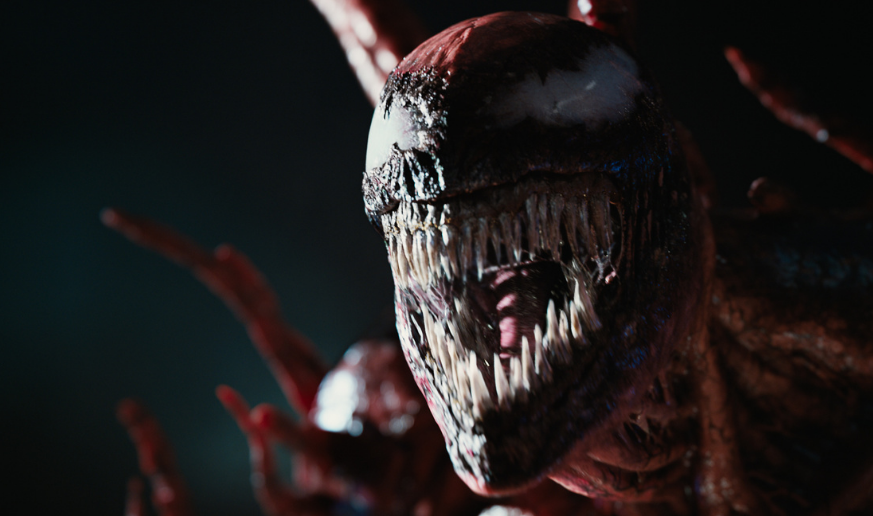
Case Study
Image Engine delivered 202 shots on Andy Serkis’s action-packed Venom sequel, including numerous sequences featuring the titular villain itself. Learn how our team worked symbiotically to deliver eye-opening destruction FX, create an action sequence in almost full CG and bring Carnage’s tentacles to life.
Watch breakdown reel View project pageSony released Venom in 2018 to considerable success; Tom Hardy’s semi-comedic take on the anti-hero and its human host Eddie Brock saw the film become the seventh highest-grossing film of the year. A follow-up was sure to come and audiences received it in 2021 with Venom: Let There Be Carnage, a film that repeated the original’s success, becoming the seventh highest-grossing film of the year.
Venom: Let There be Carnage features all the genre-blending fun that made the original film such an entertaining ride: the rom-com back-and-forth between Eddie and his eponymous alien parasite; Tom Hardy’s one-man slapstick comedy; and destructive action set-pieces in which Venom rips through city infrastructure, but this time with the antagonist Carnage in tow.
Delivering on all of the above required cutting-edge visual effects, so the CG-experienced Andy Serkis was brought on as director alongside veteran VFX Supervisor Sheena Duggal, who then hired Image Engine as a vendor for its creature and FX expertise. Image Engine went on to deliver 202 shots with 105 artists on Venom: Let There be Carnage, with visual effects work ranging from simple set extensions to explosive FX-driven set pieces and, of course, the complex character animation of Carnage itself.
Creating Carnage
The main bulk of Image Engine’s 202 shots on Venom: Let There be Carnage comprised work on an extensive action sequence featuring the Ravencroft Institute, a maximum-security asylum for the mentally ill. In the events leading up to the sequence, a red symbiote named Carnage has infected serial killer Cletus Kasady (Woody Harrelson) and charged him with Venom-like powers. Using his newfound abilities, Cletus heads to the Ravencroft Institute to break out his inamorata Shriek, another super-powered villain with the ability to manipulate sound. Image Engine created numerous shots across this break-out sequence, including many that feature the tentacled Carnage himself.
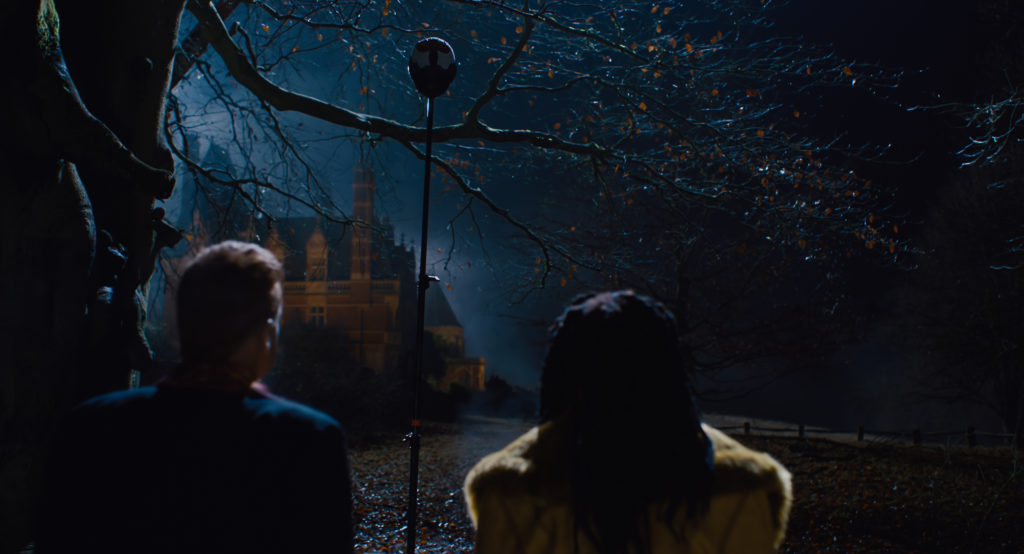

“Carnage is such an iconic character and is such a powerful creature in the comic books, so bringing it to life required a lot of thinking. We wanted to ensure we translated its power and strength onto the big screen,” begins Christian Irles, Visual Effects Supervisor at Image Engine.
The Image Engine team turned to a mass catalog of Carnage comic books and considered how the character had been portrayed over the years. Next, they started to transfer this representation from 2D imagery to the world of 3D.
“Translating the character into 3D required a lot of technical and creative solutions,” says Christian. “We wanted to maintain the character’s key comic book poses while ramping up the physicality. We would use Carnage’s tendrils to help silhouette his poses, for example, and its motion to exhibit aggression. We also accentuated Carnage’s silhouette and musculature, utilizing strong rim lighting while keeping most of his body in the shadows.”

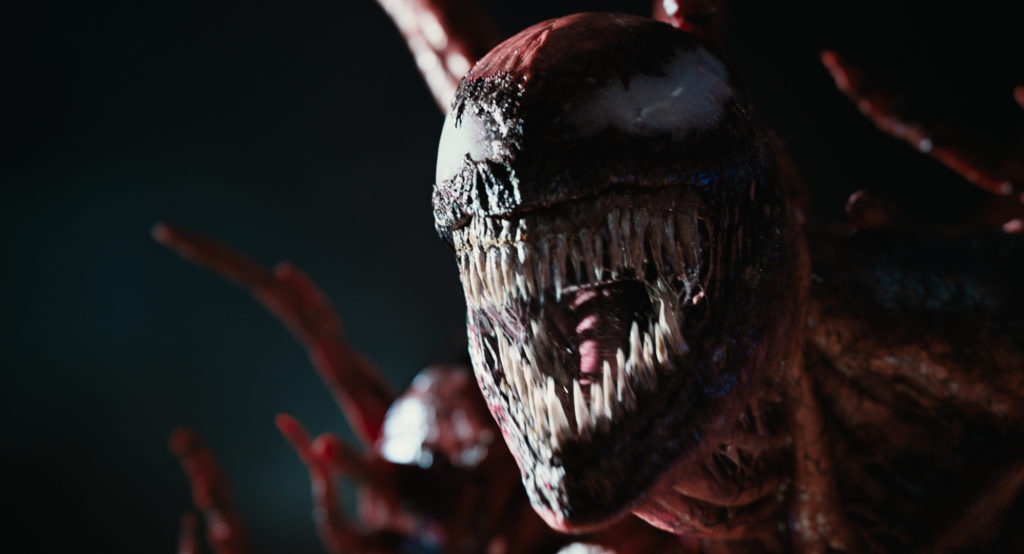
Although Carnage is a symbiote like Venom, the character’s representation had to differ from Venom’s, given the alien had infected the body of a violent and extremely destructive serial killer. “As Carnage has infected Cletus Kasady, we wanted to portray the symbiote as an utterly unstoppable force,” says Richard Spriggs, Animation Supervisor at Image Engine. “Unlike Venom, who is fairly self-contained and maintains a more bipedal form, Carnage had to feel like he was everywhere and spreading.”
To communicate Carnage’s mutating form, Image Engine showed the character enveloping his environment and using it to become stronger. For example, Carnage’s tendrils mimic the shapes found on structural elements from nearby buildings. “To determine how Carnage could grow and envelop his environment we looked at the Lindenmayer system, which is a mathematical formula that generates fractal patterns,” explains Richard. “Using these patterns, Carnage’s body and tendrils imitate his environment and create a unified structure of geometric shapes and organic tissue.”
Tentacle FX
Image Engine also delivered numerous shots which feature one of Carnage’s most recognizable aspects: its whip-like tentacles. The team animated the barbed appendages undulating behind Carnage, tightening around one of Cletus’s victims like a vine and crushing a sound-proof cell as if it were an eggshell, among numerous other shots.
“Carnage’s tentacles had to look powerful, organic and gross—although due to the film’s PG rating, we were careful neither Carnage nor its tentacles looked like raw flesh,” says Christian. “The tentacle’s organic look was achieved using procedural textures and shaders in Gaffer. We then used keyframe animation to bring the tentacles to life; they had to have weight and intent to look believable, as we did not want them to move like snakes or have a saggy shape.”


Christian and the team also worked to make the tentacles feel like an extension of Carnage’s personality. “The appendages move and reshape when Carnage’s mentality shifts, such as becoming rigid and sharp when he strikes an aggressive pose,” says Christian. “The rigging system controlling these tentacles was very complex. Our animation department did a great job in rigging Carnage to be able to grow numerous tendrils, which could then branch out and morph into multiple weaponized tips.”
Two main challenges stood out when creating the tentacles: “First there was the issue of the tentacles interacting with clothes, especially Cletus’s. We had to replace Cletus’s jacket with a CG version to make its interaction with the tentacles plausible,” says Christian. “Secondly, there was the scale issue. Carnage’s tentacles could sometimes be as thick as a human body, while at other times, they could be as thin as hair. As such, we had to adjust the tentacles’ textures on a shot-by-shot basis to give them a scale that felt appropriate and realistic.”
Talking to yourself
Tentacles aren’t the only protrusions that emerge from Cletus’s body. Several times throughout Venom: Let There be Carnage, Carnage emerges himself in “Wraith” form, wherein its head extends via an excrescence to talk with or berate its human host.
“The Carnage Wraith effect featured in just a handful of shots, but each was unique and presented a different challenge,” explains Christian. “We took inspiration for the look from Venom’s Wraith scene as seen in the first film; the liquid-like quality of the effect is due to Carnage being less powerful when partially outside its host. We relied heavily on keyframe animation, FX simulations, and bespoke shaders and lighting to deliver the final shots.”
Image Engine also handled two transformation shots, in which Carnage doesn’t just protrude a part of itself outside of its host but fully transforms Cletus into a full Carnage manifestation.
“The brief was for the Carnage/Cletus transformation to look like an anatomical change, with one character physically becoming the other,” says Richard. “Unlike Venom, which has more of a symbiotic relationship with Eddie Brock, this transformation had to look violent and forced. We wanted to convey the feeling that Carnage is more of a parasite and, in making the transition, is painfully breaking Cletus’s facial bones and melting skin. To deliver the effect, we built full-face rigs for Cletus and Carnage, which were blended and warped to create the face-breaking transformation.”
“Although Cletus is smaller than Carnage, it was important to the production that his clothes did not tear during the transformation, but rather had to be swallowed by Carnage’s body as it grew,” adds Christian. “Our FX and creature FX departments used Houdini and Maya to achieve a harmonious look for the body and clothes during the transformations.”
Escaping Ravencroft
Although it may not look it to the naked eye, Carnage is not the only CG element featured predominantly in the Ravencroft escape sequence: the entire scene is, in fact, largely photoreal CG.
“The Ravencroft escape sequence was the most challenging work we had on Venom: Let There be Carnage because most action shots in the sequence were computer-generated, apart from when we see Cletus and Shriek react in close-ups,” says Christian.
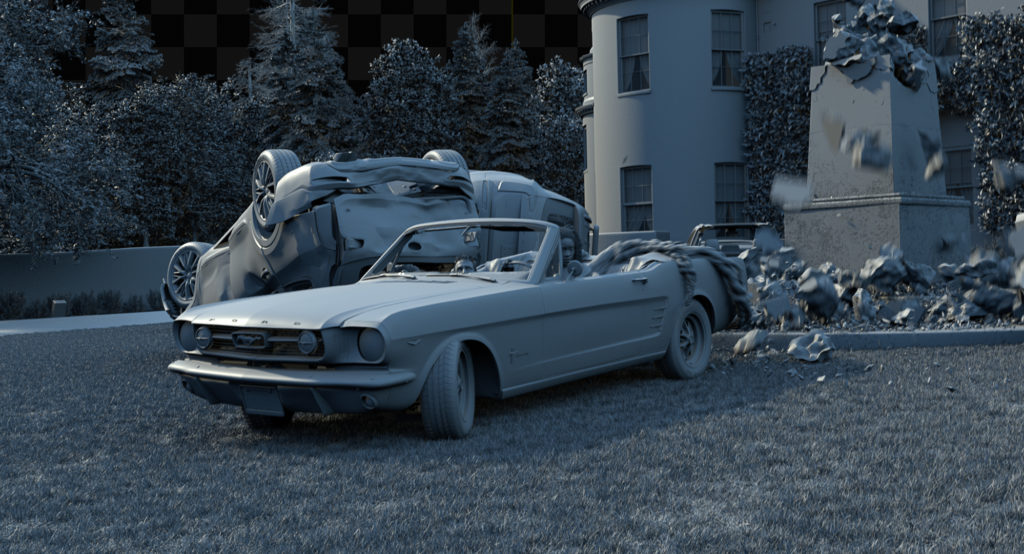
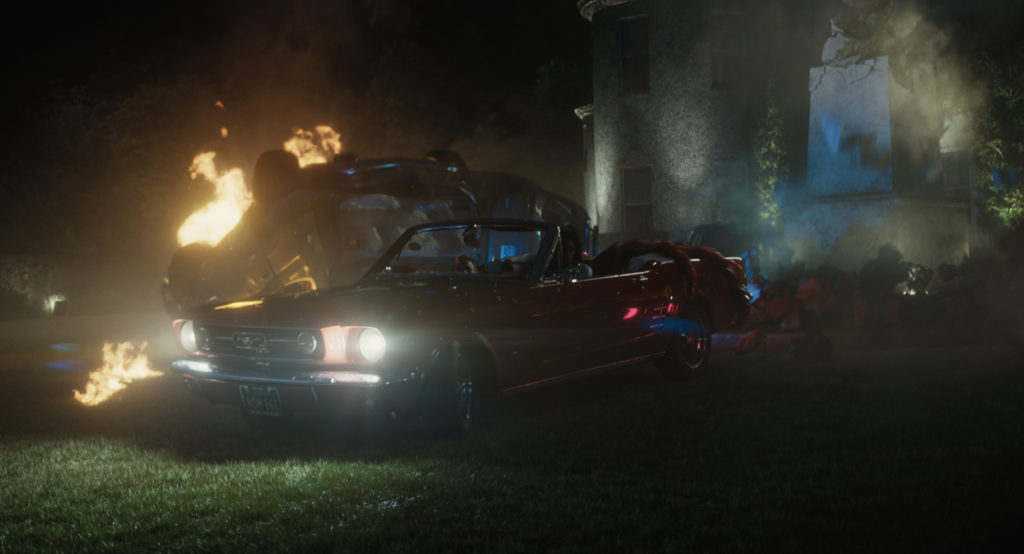
Image Engine’s CG work included shots of Carnage slamming vehicles into one another and ripping them in half, a shot of Carnage’s mucousy appendages splaying across the Ravencroft courtyard to suspend a car in midair, and another shot of Shriek screaming from the car into an oncoming helicopter and shredding everything in her voice’s path.
“To achieve the level of realism required, we created picture-perfect digital replicas of the environment, actors, and vehicles,” says Christian. “Our compositors then delicately balanced all the sequence’s elements to look photographic by adjusting the color, contrast, and exposure. The team referenced live-action photography and introduced a realistic depth of field and lensing artifacts, and selectively layered in fog, tracer fire, and bullet impacts to give the sequence scale and a greater sense of danger. The team then put special attention on Carnage to make sure he looked real and terrifying within the environment.”
To generate the havoc caused by Carnage during the sequence, Image Engine’s FX department created complex destruction simulations using Houdini. “We used various FX approaches for the destruction of Ravencroft,” says Yuta Shimizu, CG Supervisor at Image Engine. “For buildings, we used Houdini to shatter models and simulate destruction. For things like cars that get crushed by Carnage’s tendrils, we modeled the damage based on an on-set car and added a rig to break and animate with blendshapes.
”We had to ensure the history of the damage was maintained throughout the sequence, so the environment looked increasingly more damaged rather than reverting back to earlier states of destruction as the sequence progresses. The amount of destruction and data we were working with was significant, so we made sure we weren’t storing heavy geometry data and we used point instances to keep the cache time and data low. We then passed this destruction data to the layout department, who dressed the shot accordingly so the damage made sense chronologically.
“The whole sequence was a truly combined effort across animation, creature FX, FX, and the asset department to make sure all the different kinds of destruction worked together and the sequence felt consistent and real. The team did an excellent job.”
Screams, sets, and St. Estes
Alongside the above, Image Engine also worked on various set extensions and several one-off shots, including a shot of Shriek performing an all-powerful, world-shaking scream.
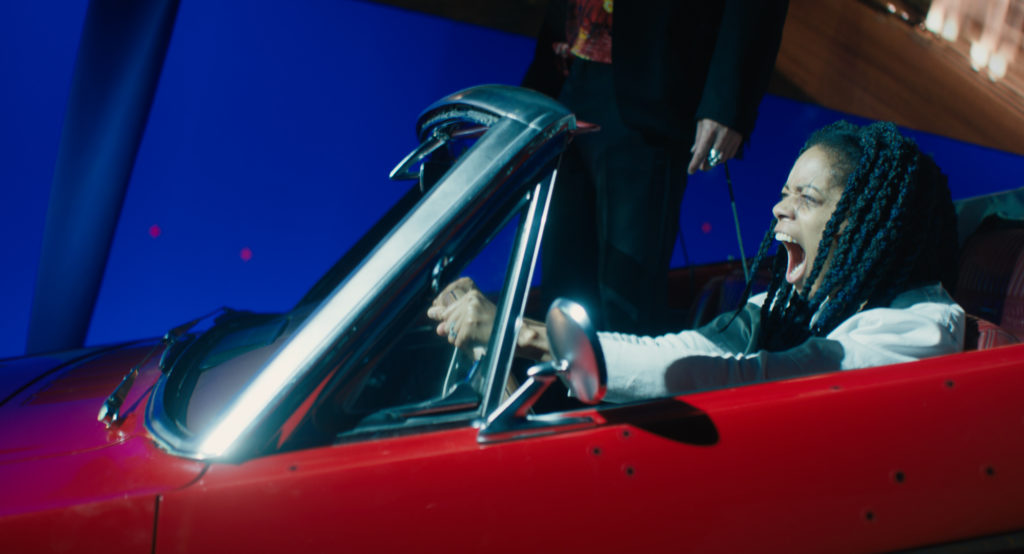

“Shriek’s scream needed to be a potent force capable of devastating damage,” explains Christian. “The production provided reference from X-Men. We took the reference and added more complexity using cymatic patterns—cymatics being the study of wave phenomena, especially visible sound and vibration.
“We relied on two ingredients to sell the shot,” he continues. “Firstly, there was the visual representation of the scream, which we executed using a combination of FX layers and compositing techniques. Secondly, there was the scream’s interaction with the environment, which ranged from replacing live-action props with CG variations which we could fling around the cell room to digitally replacing Shriek so we could make her cheeks, hair, and clothes react to the blast.”
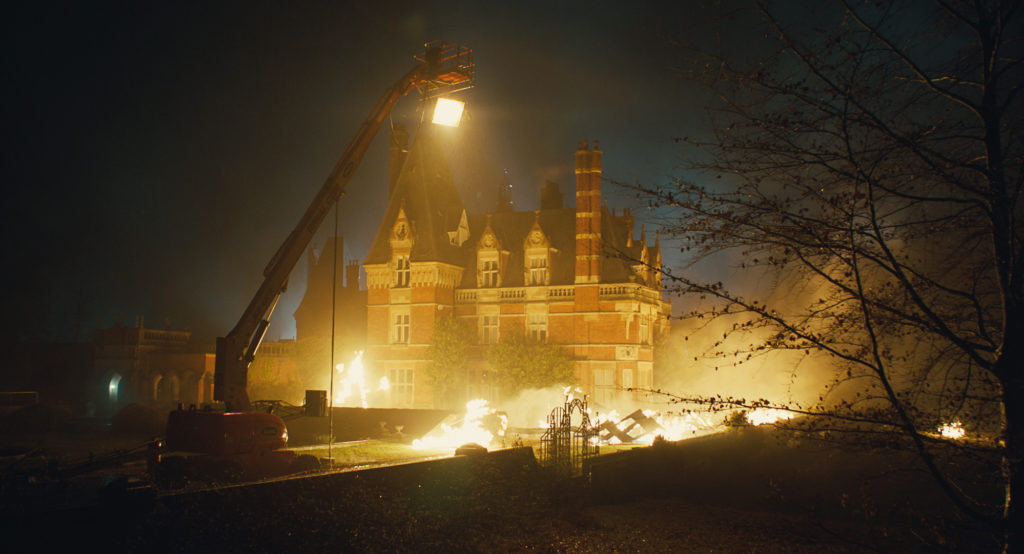
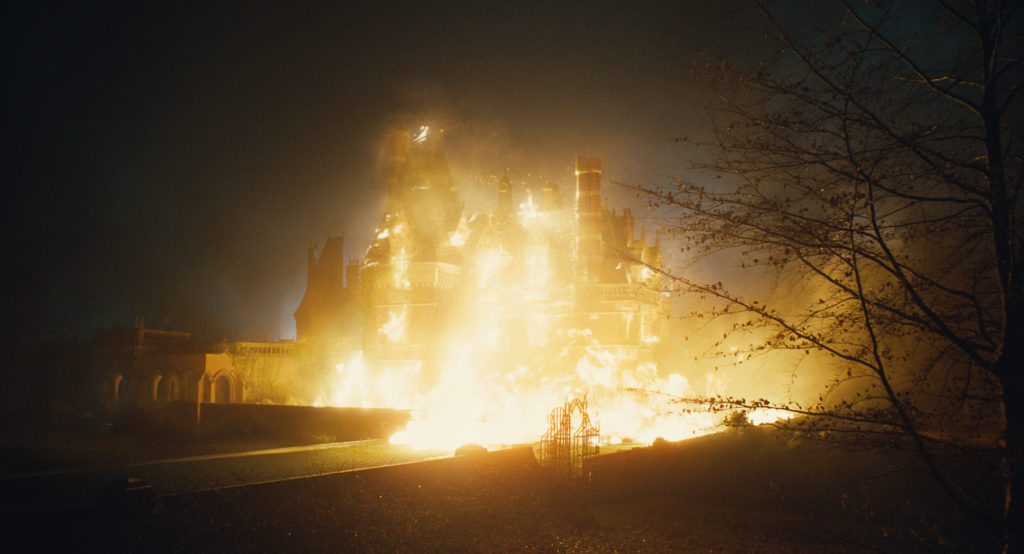
Another 50 shots saw Image Engine focus on set extensions and blue screen work. “Set extensions ranged from digital matte painting work on The St. Estes Home for Unwanted Children, where we first meet Cletus and Shriek, to a high-fidelity digital replica of the Ravencroft Institute building and its surrounding environment,” says Christian. “Blue screen work included shots of young Shriek traveling inside a van, young Cletus at St. Estes, Eddie riding his bike, and any time we saw live-action actors in the Ravencroft escape sequence.”
As for Image Engine’s other one-off shots, they included a variety of work, such as head replacements, setting the St. Estes building on fire, adding Venom arms to a live-action Eddie Brock, creating graphic designs and adding them into monitors, and animating Carnage’s tentacles throwing a digital Ford F150 off a bridge.
“This work really shows how dynamic Image Engine can be as a studio,” says Liz Roberts, Executive Producer at Image Engine. “This goes for the studio’s basis in complex creature work, but also many other diverse elements including fully computer-generated environments and simulations. The project really hit a sweet spot of what we feel Image Engine represents in the industry.”
“We performed a lot of varied work on Venom: Let There be Carnage, but whatever we worked on, I was most impressed by the dynamic feeling we brought to each sequence,” concludes Richard. “It was imperative for this sequel that we made Carnage look and feel like a force to be reckoned with, and the Image Engine team really delivered. Our sequences are fast-paced and exciting. I’m really proud of the work we put in.”


